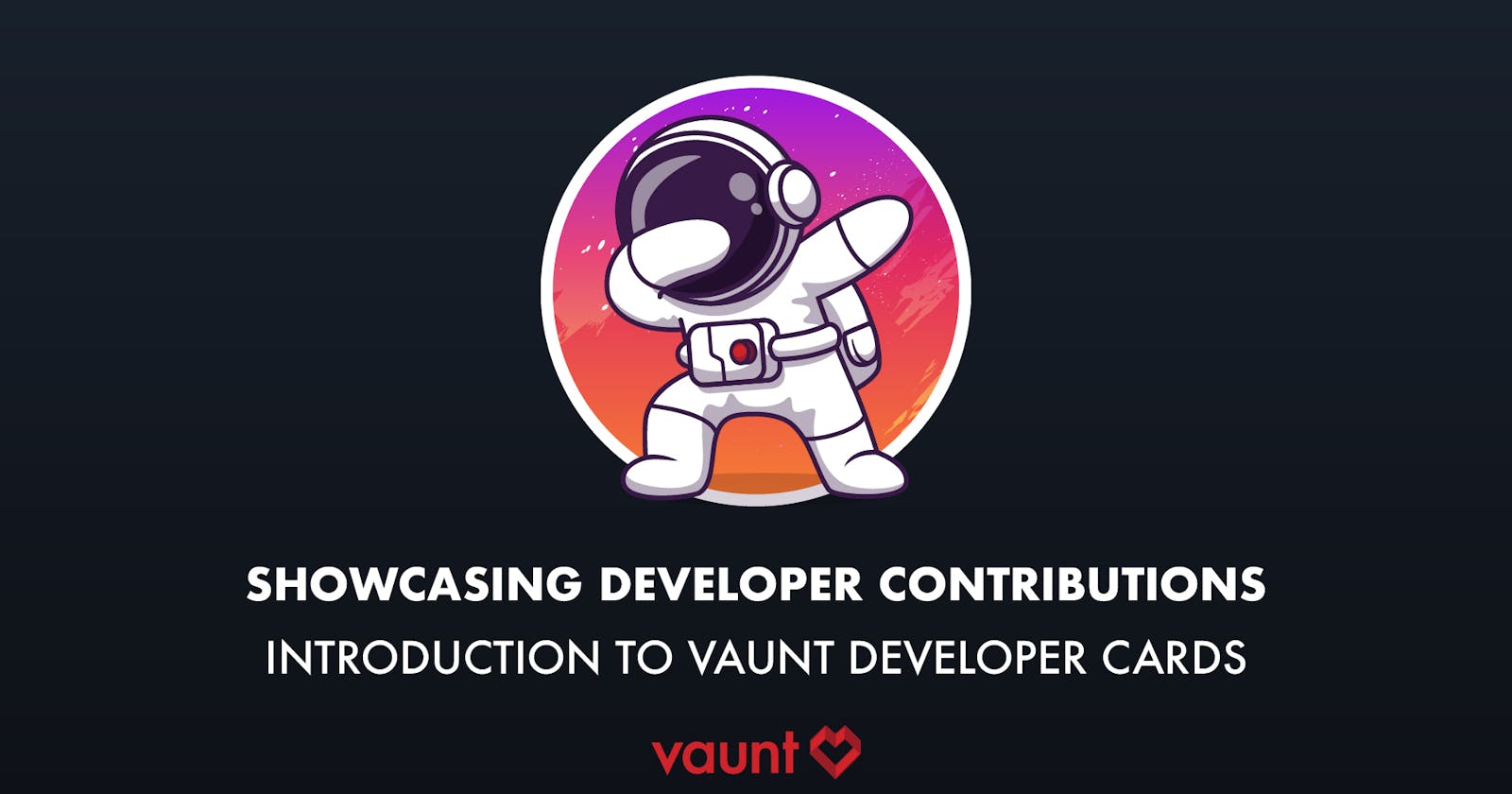We are excited to share our first release of Vaunt, an application that brings better visibility to your GitHub contributions. You can install Vaunt here.
Growing Challenges
Open-source software has evolved into a vast ecosystem with millions of developers and projects. This tremendous growth brings with it some interesting challenges for developers. Finding projects, understanding how to contribute, being recognized for contributions, and building lasting relationships with developers are a few challenges that we hope to solve. We believe open-source technology is as much about the community and relations that are formed as it is about the technology being developed. With that said, organizations and project owners are limited in tools that help them foster a mutually beneficial developer ecosystem.
Today, we are releasing Developers Cards, a new way for developers to showcase their experience and contributions to repositories. This is our first release that aims to provide more visibility into how a developer is engaging with various public or private projects. Over time, we will be adding more flexibility and customization for developers to create personalized cards. We have initially added support for GitHub and will be evaluating adding other VCS vendors in the future.
Below is an example of a developer card for one of our engineers!

Our stats cards are available via our API and are free to use!
In this article, we will be walking through how to gain access to Developer Cards by leveraging our GitHub application.
Installing Vaunt
You can install Vaunt by heading over to our public application page on GitHub.
After clicking on install, you will be directed to a page that describes where you can install Vaunt and see the permissions we ask for during installation.
Vaunt uses Github APIs and event webhooks to retrieve contribution data from repositories. Once Vaunt is installed, public contributions will be available. Additionally, private contributions will be counted for any repository to which Vaunt has been given access!
Updating Your Profile
GitHub provides users with the ability to customize their profile pages by creating a profile readme file. You can learn more about managing your GitHub readme here.
In short, the readme file is a simple markdown file that can be used to describe yourself. GitHub has a wide range of support for markdown features and if you are new to markdown, you can find an introduction from GitHub here.
We have taken advantage of this awesome Github feature by leveraging the basic HTML support provided to embed our Developer Cards.
Once you have created a user repository with a readme file, simply add the following lines and replace github_username with your username.
<p>
<a href="https://vaunt.dev">
<img src="https://api.vaunt.dev/v1/github/entities/{{github_username}}/contributions?format=svg" width="350" />
</a>
</p>
That's it!
Once Vaunt is installed, contributions will start being populated.
Data may take a few minutes to populate based on your contribution history.
You can find a complete readme example here.
Summary
We are thrilled to launch our Developer Cards! We have a lot more planned and coming soon.
Again, this is our first release. We will be making adjustments to how contributions are displayed and calculated as we continue to refine our application.
We plan on covering the inner workings of Vaunt in additional posts. To stay in the loop on future development follow us on Twitter or join our Discord! Don't hesitate to make feature requests.
We can’t wait to vaunt your contributions with you!

